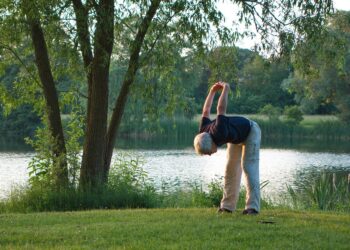
Unfortunately, women are usually on the “bad side” of a gender gap — but when it comes to exercise, it’s women who come out on top. According to a new study, women gain more cardiovascular benefits from working out than men, even if they work out less often.
Working out
Although this has started to change in recent times, exercising has traditionally been a male-dominated activity. Picture a crowded gym. How many men and how many women are there? But as it turns out, women have an extra incentive to stay fit: they get extra benefits from every minute they work out.
The new study analyzed data from 412,413 U.S. adults utilizing the National Health Interview Survey database. The data were gathered from 1997 to 2019 and 55% of participants were women. The database included surveys regarding leisure-time physical activity. Researchers took this data and then compared it with gender-specific outcomes, looking at the relation to frequency, intensity, and duration of physical activity.
Unsurprisingly, everyone who worked out was healthier. However, the effect was more pronounced in women.
“For all adults engaging in any regular physical activity, compared to being inactive, mortality risk was expectedly lower,” said Susan Cheng, MD, MPH, the Erika J. Glazer Chair in Susan Cheng, MD, Susan Cheng, MD, director of the Institute for Research on Healthy Aging in the Department of Cardiology in the Smidt Heart Institute, and senior author of the study. “Intriguingly, though, mortality risk was reduced by 24% in women and 15% in men.”
Maximal benefits
In this context, researchers typically look at something called maximal benefits. Basically, you are healthier if you work out and stay healthy — but up to a point. If you work out 8 hours a day 7 days a week, you’re not really going to get any additional benefits from another hour. So, researchers look for the point where the benefits drop off.
For moderate to vigorous activity (such as brisk walking or cycling), men get maximal benefits at around five hours per week. Meanwhile, women get the same degree of benefit at just 2.5 hr per week.
But women can get even more benefits by going up to 5 hours per week.
“Women have historically and statistically lagged behind men in engaging in meaningful exercise,” said Martha Gulati, MD, director of Preventive Cardiology in the Department of Cardiology in the Smidt Heart Institute at Cedars-Sinai, the Anita Dann Friedman Chair in Women’s Cardiovascular Medicine and Research and co-lead author of the study. “The beauty of this study is learning that women can get more out of each minute of moderate to vigorous activity than men do. It’s an incentivizing notion that we hope women will take to heart.”
The bottom line is pretty straightforward. If you’re a male, try to aim for 300 minutes of vigorous exercise a week — it really is worth it. If you’re a woman, it’s even more worth it! Every bit helps for both men and women. But, as it turns out, for women it helps a bit more.
“I am hopeful that this pioneering research will motivate women who are not currently engaged in regular physical activity to understand that they are in a position to gain tremendous benefit for each increment of regular exercise they are able to invest in their longer-term health,” said Albert, professor of Cardiology.
In the study, the researchers also conclude:
“Women compared with men derived greater gains in all-cause and cardiovascular mortality risk reduction from equivalent doses of leisure-time physical activity. These findings could enhance efforts to close the “gender gap” by motivating especially women to engage in any regular leisure-time physical activity.”
The study has been published in the Journal of the American College of Cardiology.






